After spending much of last year familiarizing ourselves with many of the native plants on the property, this year we’ve resolved to try harder when it comes to positively identifying our native grasses.
Identification of native grass species, quite simply, can be very confusing. For much of the year their appearance can be relatively non-descript, especially to novices such as ourselves. Last year, once a number of our grasses on the property had set their seeds and awns, I made an effort to identify as many as I could, but the vast majority turned out to be undesirable non-native species.
Despite the recent unsettled weather, and there’s much more on the way, a quick walk on the property turned up one native grass that is difficult to miss. Western Sweetgrass (Hierochloe occidentalis).
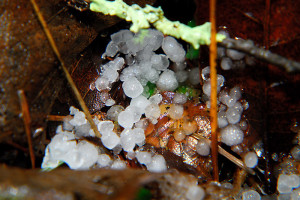
This morning, between rain showers, I braved a quick walk on the property, and got caught out in this...hail!
The genus name, Hierochloe, is derived from the Greek Hieros, meaning sacred, and Chloë, meaning shoot or blade.
Western Sweetgrass is also known as California Sweetgrass, or California Vanilla Grass, and is native to the west coast of North America, from California to Washington. This is an evergreen perennial clumping grass, with broad green blades that grow greater than a foot tall, and spreads via creeping rhizomes.
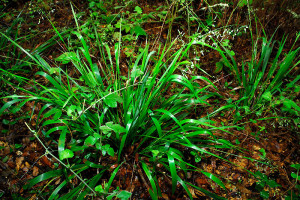
Clumps of Western Sweetgrass can appear very lush at this time of year, where there's little competition from other plants
The area where I photographed these specimens is being heavily encroached upon by the non-native Myosotis latifolia. It seems, at least to my eye, that where the Myosotis is most prevalent, the Sweetgrass is sparse if present at all. I’ll be curious to see if when these Forget-me-nots are removed, if the Sweetgrass is able to fill in those areas
This species isn’t particularly distinctive for much of the year. By late winter though its flowering culms push at least 8 inches above the grassy blades, making it much easier to distinguish.
Just before it blooms the wavy stalks are distinctive enough to help identify this species.
Once in bloom the florets are impossible to miss.
The blades of this grass are sweetly scented when dried or crushed, hence its common name, but you’ll have to take my word for that as scratch-and-sniff blogs have yet to be invented. The sweet aroma of this grass is reminiscent of freshly mown hay, which is attributed to the presence of coumarin.
Hierochloe occidentalis is highly deer resistant, in fact, here it’s completely untouched. The production of coumarin, which is a very bitter tasting phenylpropanoid, helps to defend this grass against predation. This helps to explain why Hierochloe occidentalis is so deer resistant, it simply doesn’t taste good. So it seems ‘Sweetgrass’ isn’t so sweet after all!
Coumarin in Sweetgrass is a precursor to dicoumarol, a naturally occurring anticoagulant. Coumarin can be transformed into the anticoagulant dicoumarol, a Vitamin K antagonist, by a number of species of fungi. Dicoumarol is the compound responsible for ‘bleeding disease’ in livestock that are fed moldy Sweet Clover hay.
California Sweetgrass is most at home in coniferous forests, and grows very well in shade. These specimens are down toward the valley floor tucked under some redwoods, Douglas fir and bigleaf maples, and its preference for damp soils is evident as it becomes more abundant toward the creeks. We don’t see it at all on the exposed dry orchard slope that receives much more sun, although we do have another bunch grass there that we suspect is native, but is as yet unidentified.
It is important to note that Hierochloe occidentalis, outside of its native range, easily escapes cultivation, and can become highly invasive.
Unfortunately, these specimens of Western Sweetgrass are growing robustly in an area where we were considering keeping a few diary goats in the not too distant future. It would be a shame to lose such a large collection of this native grass, so we may need to relocate some of this grass out of our future goat’s reach.
Surprisingly, we’ve also discovered a very large collection of Calochortus leaves growing in the same area this winter, presumably Calochortus albus which was found growing elsewhere on the property last spring. The Calochortus won’t bloom until late April, but we have no intention of leaving those for the goats either. Rather than move the Calochortus and the sweetgrass, I’m now wondering if it might be easier to consider relocating our future goats instead!
In the meantime we seem to have at least three other species of unidentified clumping grasses at various locations throughout the property that I’m determined to identify. It’s time to hit the books and see if this spring we can finally figure out who’s who!

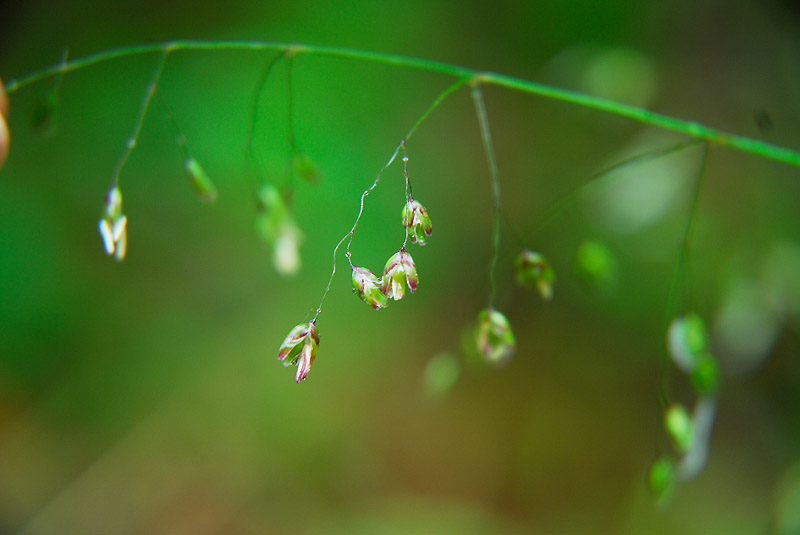

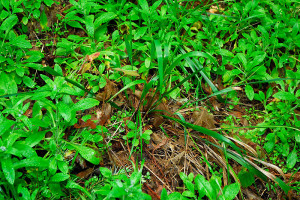

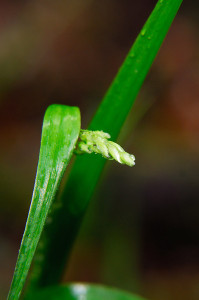


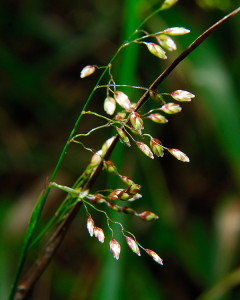
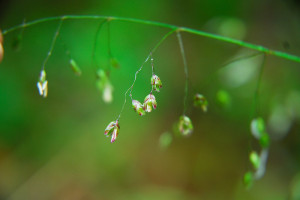
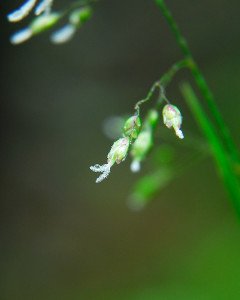

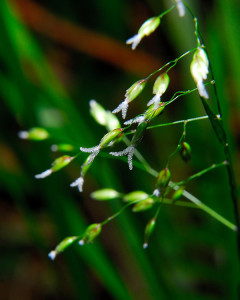
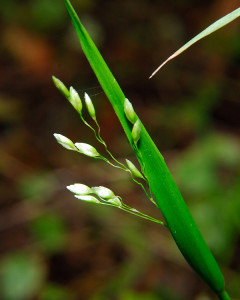

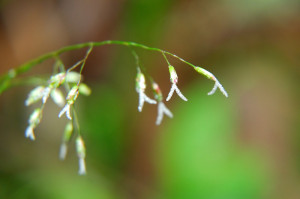







Identifying native grasses has been a challenge for me too, Claire. So far the ones I’ve been able to ID are non-native and it’s discouraging since the rest of the place is filled with natives existing before we came. I am determined to take more photos at different stages, like you have done here and keep browsing through CalPhotos and CNPX sites.
I really appreciate your posts on the individual natives, whether they be plant, animal or fungi!
Sue, I tried all of last year to ID some of our native grasses, and finally threw my hands up. I’ve learned that I should pay closer attention to ‘clumping’ type grasses, as a number of our native species exhibit that growth habit. The rest has been patience and persistence, but I still have a LOOOOONG way to go. Think we have a Melic grass and a native fescue too…but thus far, I’m not convinced 😉 Grasses are hard to ID!
On the ‘fun-meter’, identifying native grasses (rather, trying to identify them) doesn’t rate very high for me. But your informative post, with the great photos, has inspired me to rethink learning more about them.
I agree, on the fun-o-meter grasses rate in that red 0-1 range for me too. However, as not all native grasses here are easily obtainable as seed (or if they are, they’re wildly expensive) I’m willing to forgo a little fun to try and nail down an ID. This one though, relative to the others, is easy. 😉
Way to go on identifying a native (not so common?) grass. Sounds like grass and the calochortus might win out, move on over goats.
I’m not sure how common this grass is. I get the impression that it’s not that rare here. I agree, getting the goats to move over might be the best plan. Besides, we have some natives in that area that are potentially toxic to small ruminants too. Between toxic plants, and predators, the goat thing isn’t looking so good at the moment. 😛
How impressive Clare. Grasses presented as you show them here do look very poetic and delicate. Of course they are beneficial to bees and such as well. You have inspired me to identify mine. Those pebbles of hail might sting a bit if they fell on a soft spot of the head or face. We had three inches of snow instead.
The poor turkeys were caught off guard with that hail storm. This winter/spring has been no fun for the fowl on the farm. I’d rather have the snow! The grasses, for as frustrating as they are to ID, really are quite beautiful in their own way.
y ex gf her brother inlaw worked for the BLM and is a grass specialist. This guy really knows his stuff. Haven’t seen him in many years.
The hives on my blog are covered with homemade covers, look like painters dropcloths.
I can’t imagine being a grass specialist…grasses are so tricky to ID! Those bee covers were quite intriguing. Not thick enough for cold protection, I wonder what they’re using them for?
I think was rather intrigued by the coumadin reference. It is amazing how lowly weeds can have a relationship to important drugs even if it is not directly.
It is quite remarkable the array of compounds found in our native ‘weeds’ and plants. Looking more closely at what we have here, lupine, toyon, dock, etc., there are quite a few toxic native plants on the property. Certainly something we’ll need to assess more closely before introducing any livestock!
Wow… this is a task. I can’t fully identify all the trees yet 🙂
That’s ok Jess, neither can I! I’m still confused on a couple of our oaks. The squirrels got to all the acorns last year before I did. I’ll have to try harder this year in the hopes of getting a conclusive ID! 😛
I’m impressed by the knowledge of different strains of grasses. Not to mention the awesome photography!
Thanks Ted. It’s tricky taking photos in that area because it’s under dense tree canopy, and so dark!
I find identifying grasses and sedges the toughest job! Don’t you get really excited when you are able to id one?! We have a few panicums I am trying to id. It’s a rabbit hole! gail